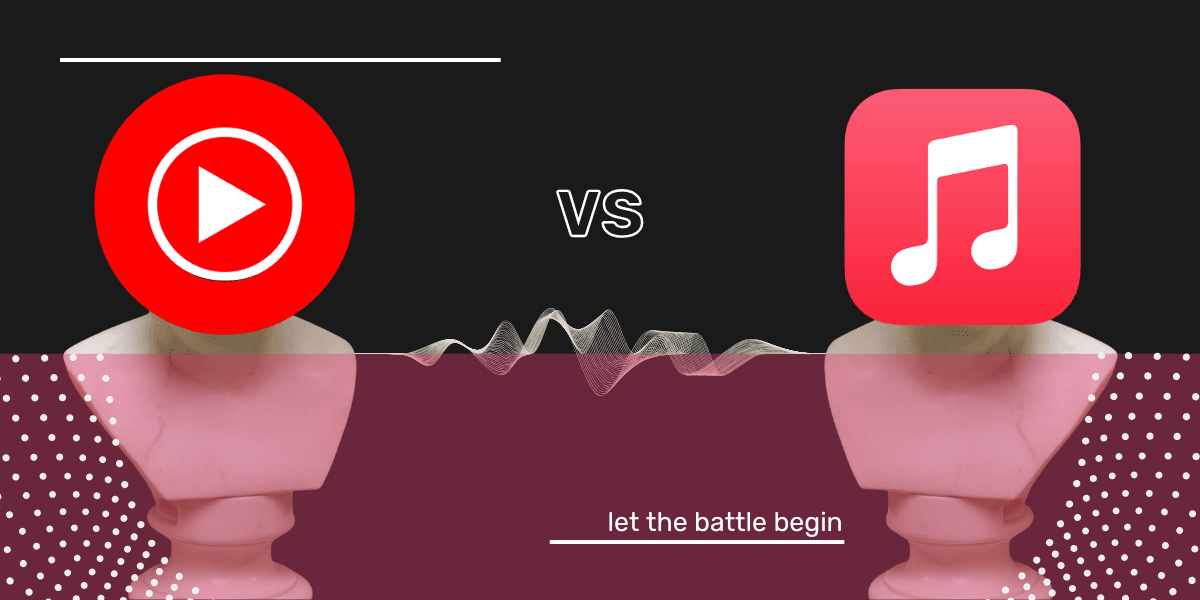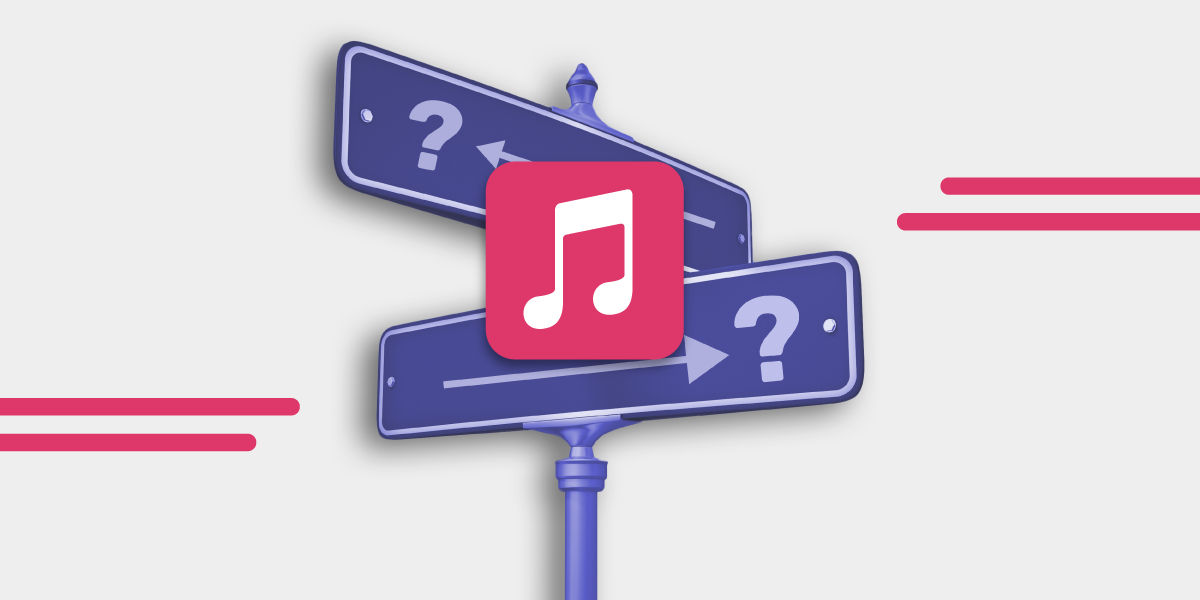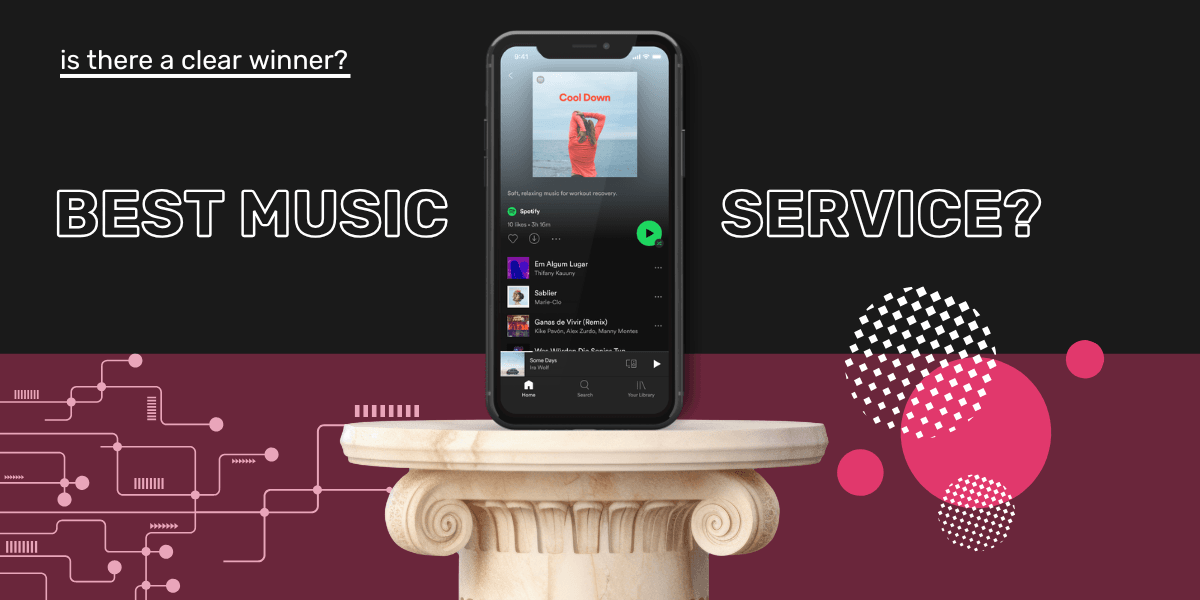The music streaming landscape is a fierce battleground, with countless services vying for our attention and hard-earned cash. “YouTube Music vs Apple Music”, two of the most popular contenders, are constantly evolving to offer more features, better audio quality, and greater compatibility. But which music streaming service truly deserves your loyalty? Let’s delve into the nitty-gritty of these two giants and find out which one hits all the right notes.
Key Takeaways
-
Apple Music and YouTube Music both offer great platform compatibility, different subscription plans & pricing, audio quality & formats to suit a variety of needs. Explore Apple’s high quality music library or immerse yourself in the unique content variety on YouTube Music.
-
Get personalized music recommendations from either service for discovering new tunes plus additional features like background play and offline listening!
Platform Compatibility
In today’s world, we want our music to be accessible across various devices and platforms. When it comes to device compatibility, there are some key differences between Apple Music and YouTube Music.
Here’s a comparison of the compatibility offered by each service.
Apple Music
Apple Music boasts a wide range of platform compatibility, including:
-
iOS and Android devices
-
macOS and Windows computers
-
Gaming consoles
-
Smart TVs
-
Amazon Echo devices
-
Apple Watch
This wide-ranging support makes it a versatile choice for music lovers who want access to their tunes on various devices, no matter where they go. Additionally, Apple Music’s seamless integration with other Apple services and devices, such as Siri, elevates the experience for users who are already invested in the Apple ecosystem.
On the other hand, YouTube Music, which replaced Google Play Music, primarily focuses on Android, iOS, and web browsers. While it can be cast to a connected speaker or TV, it lacks the extensive compatibility offered by Apple Music, particularly when it comes to gaming consoles, smart TVs, and voice assistants.
For users interested in enhancing their multimedia projects, exploring various music over video apps can provide additional creative options.
YouTube Music
The YouTube Music app is available on iOS, Android, and web browsers, providing a decent range of compatibility for those who primarily listen to music on their smartphone or computer. Android users, in particular, can benefit from YouTube Music’s integration with Google services, resulting in personalized music suggestions based on their preferences and real-time information like location and weather.
Although YouTube Music offers a good experience for mobile and web users, it does fall short in some areas. For example, it has limited compatibility with gaming consoles, smart TVs, and voice assistants compared to Apple Music. This might be a significant drawback for users who want a more seamless experience across all their devices.
Subscription Plans and Pricing
When it comes to subscription plans and pricing, both Apple Music and YouTube Music offer a variety of options to suit different needs and budgets. Comparing these two services, we can explore which one provides the best value for your money, considering aspects from free trials to family plans.
We’ll start by looking at the individual plans offered by each service. Apple Music offers a variety of services.
Apple Music
Apple Music offers a range of subscription plans, including:
-
Individual plan: $10.99 per month.
-
Family plan: $16.99 per month (covers up to six people).
-
Student plan: $5.99 per month (eligibility verified through UNiDAYS).
These plans provide options for different needs and budgets.
While Apple Music does offer a 1-month free trial for new users, it does not have a free ad-supported version. This means that after the trial period, you’ll need to choose a paid plan to continue enjoying its features and extensive music library.
[APPLE_PROMO]
YouTube Music
In contrast, YouTube Music provides:
-
A free ad-supported version for those who don’t mind listening to ads between songs.
-
Individual and family plans at the same price points as Apple Music, $10.99 and $16.99 per month, respectively.
-
The student plan at $5.49 per month, making it an affordable option for students.
One major advantage of YouTube Music is its 1-month free trial for all users.
Consider YouTube Premium with YouTube Music bundle
YouTube also offers a great bundle for YouTube Premium and YouTube Music Premium. With a YouTube Premium subscription, you can watch ad-free videos on YouTube. You can also download videos for offline viewing and play content in the background while using other apps. YouTube Premium includes YouTube Music Premium and gives you access to over 100+ million songs ad-free, offline and with a locked screen.
-
Individual plan costs $13.99. The family plan is only $22.99 for 5 family members, which makes it a great deal.
-
The student plan is priced at $7.99.
This offer also comes with a 1-month free trial.
Audio Quality and Formats
An essential aspect of any music streaming service is the audio quality and formats offered. After all, nobody wants to listen to their favorite tunes in poor quality.
A comparison between Apple Music and YouTube Music will reveal which service offers the superior audio experience.
Apple Music
For audiophiles, Apple Music might be the clear winner in terms of audio quality. The service offers Lossless and Hi-Res Lossless audio options, providing a high-quality listening experience for those who value sound fidelity. Additionally, Apple Music supports Spatial Audio and Dolby Atmos, further enhancing the audio experience and delivering an immersive sound that goes beyond traditional stereo or surround sound.
However, it’s worth noting that Lossless audio options can consume more data than standard audio quality. If you’re streaming music on a limited data plan or have concerns about data usage, you might want to stick to the standard audio quality or download songs for offline listening.
YouTube Music
While YouTube Music may not offer the same high-quality audio options as Apple Music, it still provides a decent listening experience for most users. The service streams at a lower bit rate compared to Apple Music, with a maximum of 256 kbps for premium subscribers.
Although the audio quality might not be as high as Apple Music’s Lossless options, the difference may not be noticeable for casual listeners. Furthermore, YouTube Music’s lower bitrate could be an advantage for those with limited data plans or slower internet connections, as it consumes less data while streaming.
Content Selection and Variety
A crucial factor in choosing a music streaming service is the content selection and variety it offers. Both Apple Music and YouTube Music boast impressive libraries, but there are some differences in the type of content and exclusives available on each platform.
Exploring their respective offerings will help determine which one caters to your musical tastes.
Apple Music
Apple Music offers:
-
A massive library of over 100 million songs, spanning various genres and catering to diverse musical tastes.
-
Live radio stations.
-
Artist-hosted shows.
-
Exclusive content like documentaries and interviews.
This vast content selection ensures that you’ll likely find something to suit your preferences, whether you’re in the mood for chart-topping hits, indie gems, or niche genres. Apple Music’s curated playlists and radio stations also make it easy to discover new music, ensuring you never run out of fresh tunes to explore.
YouTube Music
YouTube Music offers a similar library of over 100 million songs. It also comes with plenty of content variety, featuring remixes, covers, live performances, and music videos that are not available on other platforms.
Its unique content offerings can be a significant draw for users who enjoy discovering lesser-known covers, remixes, or live versions of their favorite songs. Additionally, the integration of music videos adds a visual element to the listening experience, making it a more immersive and engaging platform for music lovers.
Music Discovery and Personalization
With so much music available, it’s essential for a streaming service to help users discover new songs and artists based on their preferences. Both Apple Music and YouTube Music offer personalized recommendations and algorithms designed to cater to your unique tastes.
By examining their music discovery features, we can identify which one hits the right note.
Apple Music
Apple Music’s algorithm takes into account your favorite artists to update the “For You” section with personalized playlists and recommendations. This ensures that the service constantly introduces you to new music based on your preferences, making it easy to discover new artists and songs that align with your taste.
Additionally, Apple Music offers:
-
Curated playlists and radio stations that cater to various moods, genres, and activities, making it simple to find the perfect soundtrack for any occasion.
-
An extensive library of music.
-
Features for music discovery and personalization.
These features, including the ability to sing along with your favorite songs, make Apple Music a top choice for music lovers.
YouTube Music
YouTube Music, on the other hand, suggests songs based on your likes, dislikes, existing playlists, and YouTube history, providing personalized album and playlist suggestions. This means that the more you use the service, the better the recommendations become, as the algorithm learns your preferences and tailors its suggestions accordingly.
While YouTube Music may not have the same level of personalized curation as Apple Music, its unique content variety and integration with your YouTube history make it an appealing option for YouTube Music users who enjoy discovering new music through remixes, covers, and live performances.
User Interface and Experience
An essential aspect of any music streaming service is the user interface and overall experience. A well-designed app can make all the difference in how much you enjoy using the service and how easily you can discover new music.
By contrasting the user interfaces and experiences of Apple Music and YouTube Music, we can see which one resonates more.
Apple Music
Apple Music features:
-
A stationary navigation bar.
-
Playback controls.
-
Extra options like Love and Dislike buttons.
-
Song-based stations.
This design makes it easy to control your personal music library and navigate the app, helping you quickly find the songs, albums, or artists you’re looking for.
The app’s clean and intuitive interface ensures a smooth user experience, with personalized recommendations on the home screen and a search function that delivers accurate results. Apple Music’s user interface has been redesigned several times to ensure users have the best experience possible when discovering and enjoying music.
YouTube Music
In contrast, YouTube Music offers:
-
Easy navigation.
-
Intuitive search function (after all, it's Google's invention).
-
Main player section with all the controls you need.
-
Different tabs for accessing the catalog, personal library, recently played content and recommendations.
Although YouTube Music does not have desktop apps for Windows or macOS, its web-based player provides a comparable experience for users who prefer to listen to music on their computer. The streamlined player window and responsive navigation make it easy for users to find and enjoy their favorite music, regardless of the platform they are using.
Additional Features and Perks
Beyond the core features of a music streaming service, additional perks and extras can make a difference in your overall experience with music streaming services.
Examining Apple Music and YouTube Music in terms of unique features and benefits can assist in choosing the right service for your needs.
Apple Music
Apple Music offers some unique features that set it apart from its competitors. For instance, it includes a sleep timer, allowing you to set a timer for your music to turn off after a certain amount of time – perfect for those who enjoy falling asleep to their favorite tunes. The service also provides Saylists, which are playlists specifically for people with speech-sound disorders, helping them improve their speech through the power of music.
Additionally, Apple Music enables users to share playlists with friends, making it easy to discover new music through social connections and curated selections from those with similar tastes.
YouTube Music
YouTube Music, on the other hand, offers collaborative playlists, allowing multiple users to contribute to a shared playlist. This feature can be particularly useful for parties, road trips, or simply sharing music tastes with friends and family. YouTube Music also supports offline playlists, enabling you to download music, songs, albums, or playlists for listening without an internet connection – a great feature for users on the go or with limited data plans.
The most significant advantage of YouTube Music over Apple Music is its integration with YouTube’s vast library of video content. This means that in addition to audio tracks, users have access to music videos, live performances, and other video content that enhances their overall experience.
Artist Compensation and Monetization
As music lovers, it’s essential to consider how streaming services compensate the artists who create the music we enjoy. The effect of pay rates and monetization options on the earnings of artists calls for a comparison between Apple Music and YouTube Music in terms of artist compensation.
Apple Music
Apple Music pays artists a flat rate of $0.007 per stream, which is higher than what YouTube Music offers. While this may seem like a small amount, it can add up quickly for popular artists with millions of streams.
However, it’s worth noting that Apple Music offers fewer monetization options compared to YouTube Music, which could impact an artist’s overall earnings.
Ultimately, the higher per-stream rate on Apple Music may benefit artists directly, but it’s essential to consider the broader monetization landscape when comparing the two services.
YouTube Music
In contrast, YouTube Music pays artists around $0.002 per stream, which is lower than Apple Music’s rate. However, YouTube Music offers additional monetization options due to its larger user base and integration with the main YouTube platform.
Artists can earn additional revenue through advertising on their music videos, as well as when their music is featured in user-generated content on YouTube. This means that while the per-stream rate may be lower on YouTube Music, artists can potentially earn more through these additional revenue streams.
This might interest you: How much does Spotify pay per stream?
Summary
In conclusion, both Apple Music and YouTube Music have their unique strengths and weaknesses, making it difficult to definitively declare one as the superior music streaming service. Apple Music excels in audio quality, device compatibility, and content selection, while YouTube Music shines with its unique content variety, video integration, and additional monetization options for artists. Ultimately, your choice between the two services will depend on your individual preferences, device ecosystem, and desired features. Whichever you choose, you’ll enjoy a world of music at your fingertips.
Frequently Asked Questions
Is YouTube Music better or Apple Music?
Overall, Apple Music offers better audio quality with its lossless tracks, making it worth spending an extra dollar per month for the service.
However, YouTube Music has a wide library of songs that are not available on other streaming apps, so if that’s what you’re looking for, then YouTube Music is your best bet.
Is YouTube Music Audio Quality better?
Compared to Spotify, YouTube Music’s sound quality isn’t as good, and its maximum audio quality is capped at 256kbps.
For a truly higher quality experience, look to services such as Apple Music, Tidal, Qobuz, or Amazon Music Unlimited, which offer more powerful streaming quality options.
Is Apple Music louder than YouTube Music?
Apple Music has better sound quality with its Lossless feature and Spotify offers HiFi.
YT Music’s switching options are not as good, so Apple Music takes the cake when it comes to sound quality.






